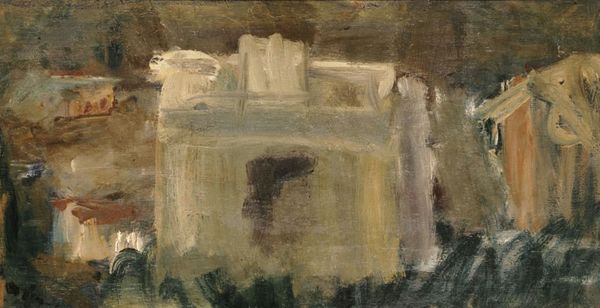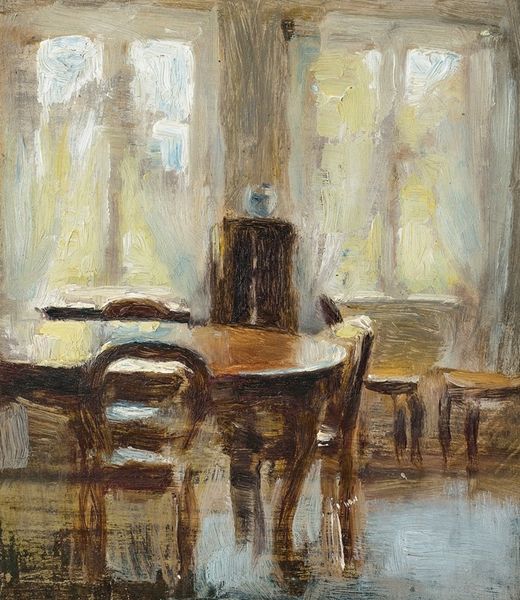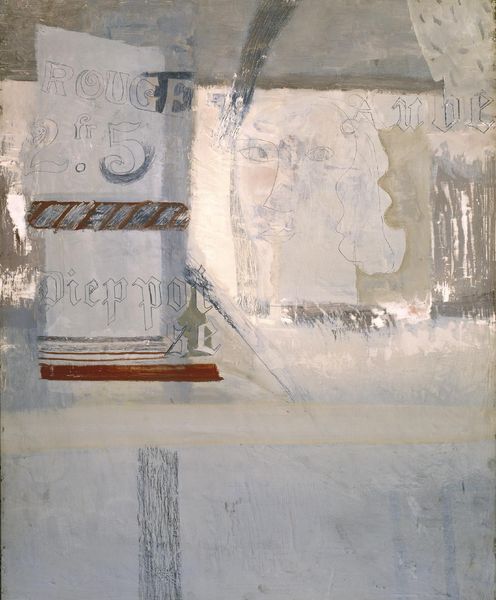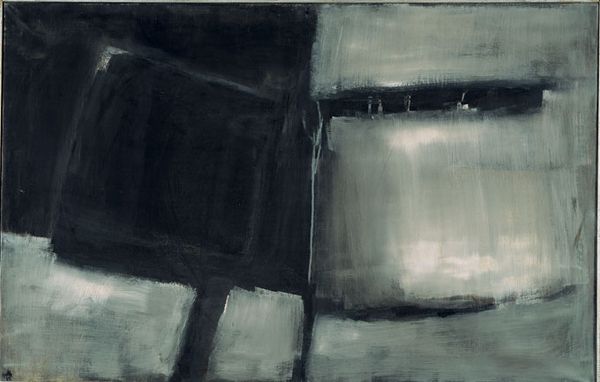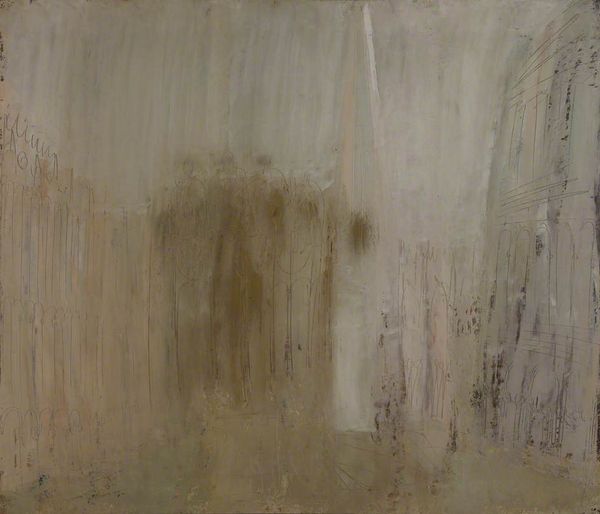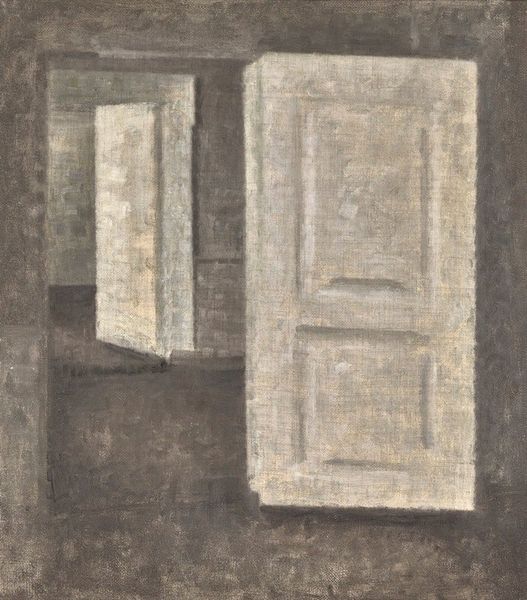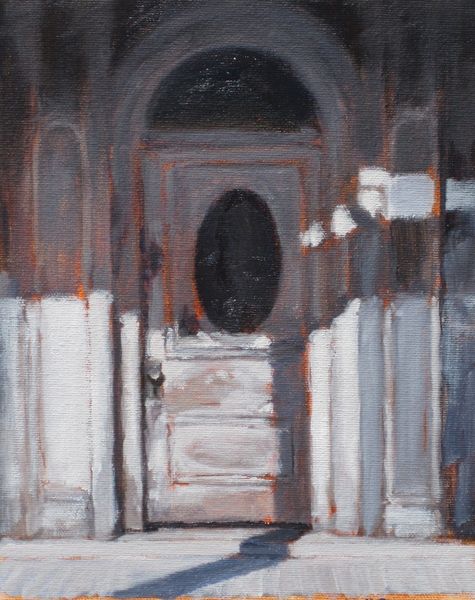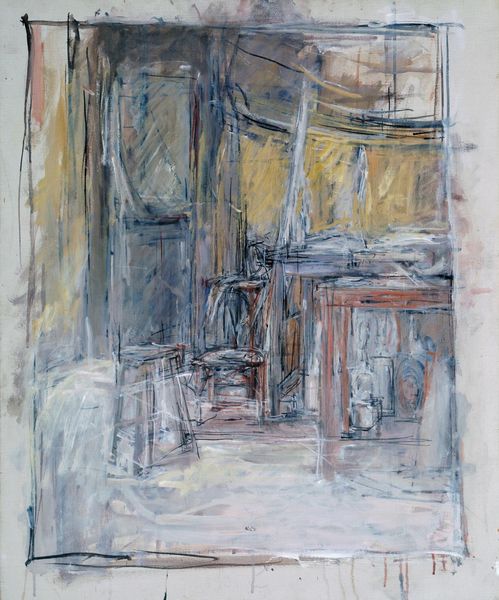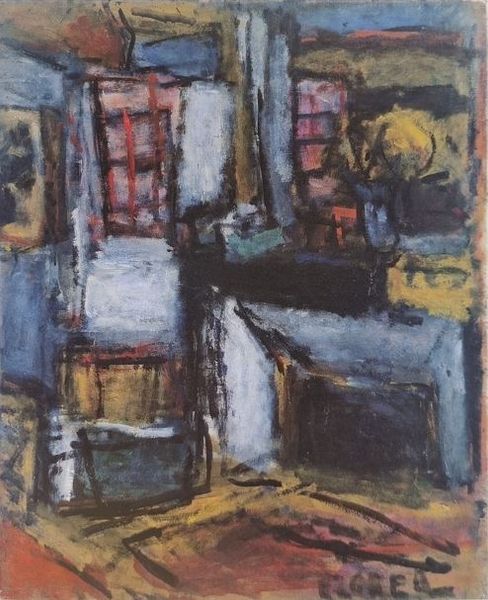
Copyright: Public Domain: Artvee
Curator: This painting, titled "Dagligstuen på Frederiksberg Allé", or "Living Room on Frederiksberg Allé", was completed by Vilhelm Hammershøi in 1887. Editor: It’s incredibly muted, almost monochrome. An overwhelmingly quiet image with curtains dominating the composition. Is it meant to convey loneliness or tranquility? Curator: I find the restrained palette creates a particular atmosphere, reflecting a Danish aesthetic tradition valuing simplicity and inward contemplation. It is as if light itself becomes a symbolic presence. Editor: How so? What does it symbolize here? Curator: Light is not merely illumination. Notice the gentle light filtering through the curtains, illuminating but also obscuring shapes. Consider light and shadow as psychological mirrors reflecting inner emotional states. They hint at mystery and impermanence. Editor: That’s true. It certainly feels far from descriptive. One could argue Hammershøi used the domestic interior as a stage to present personal psychology. Did the artist intend for these interiors to be reflections of social changes in Danish life? Curator: Indeed. Remember, this piece emerges during a period of social upheaval. Rapid urbanization and evolving gender roles shifted how people related to private space. This living room could stand for the growing importance of home, refuge from the outside world, in that transformative era. Editor: It's fascinating to see how the formal constraints and the seemingly restricted color choices amplify the image's evocative potential, encouraging us to look inward. It asks what meaning and symbolic charge could ordinary rooms contain. Curator: Precisely, by paring down representation to near abstraction, Hammershøi invites us to seek something resonant. To listen to silence, and acknowledge its layered, nuanced narratives of self.
Comments
No comments
Be the first to comment and join the conversation on the ultimate creative platform.

